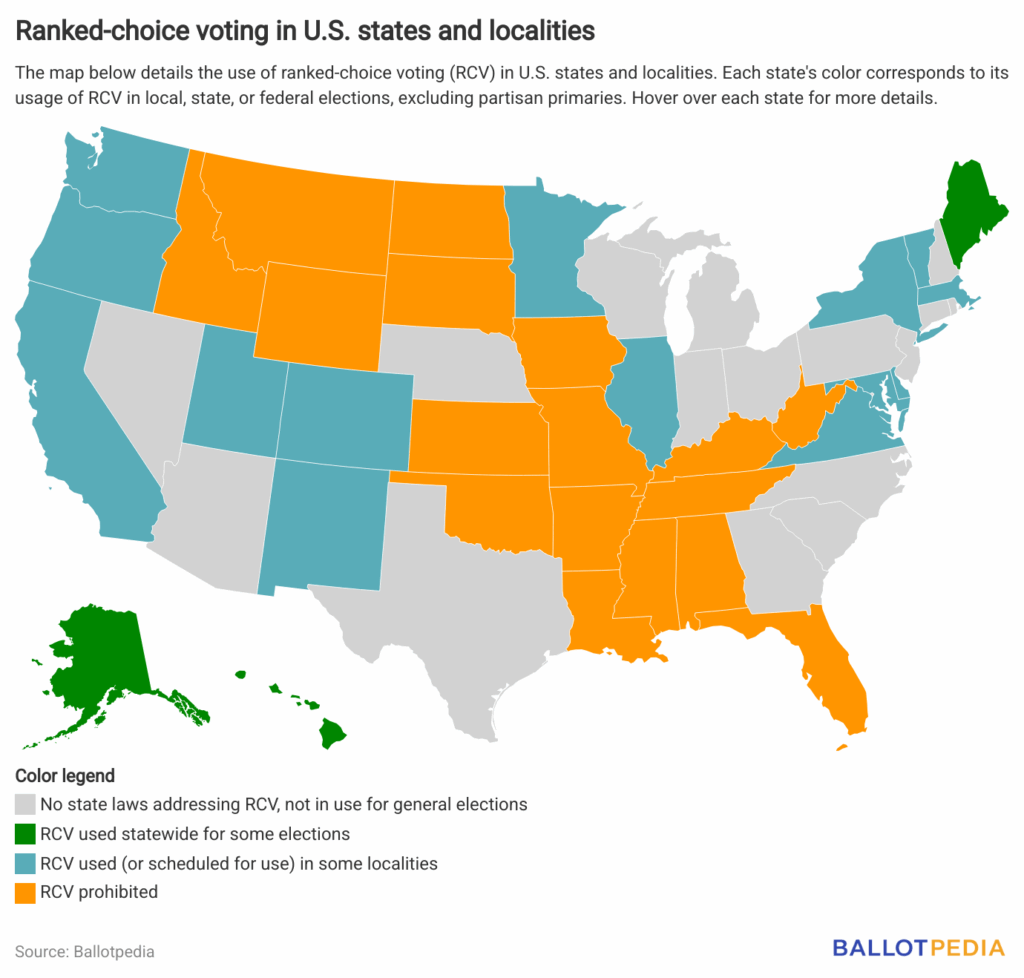On Nov. 4, 2025, voters in Greenbelt, Maryland, passed a non-binding referendum in favor of adopting ranked-choice voting (RCV) for city council elections. If the Greenbelt City Council adopts an RCV system, it would be the 52nd locality in the United States that uses or is scheduled to use RCV in at least some elections.
Greenbelt voters approved the measure 67% to 33%. Currently, one other city in Maryland — Takoma Park — uses RCV.
One other locality enacted ranked-choice voting in 2025, with voters in Skokie, Illinois, approving an RCV initiative in April.
RCV is an electoral system in which voters rank candidates by preference on their ballots. Many types of RCV exist, but the most commonly used in the United States is instant-runoff voting.
In instant-runoff voting, if a candidate wins a majority of first-preference votes, he or she is declared the winner. If no candidate wins a majority of first-preference votes, the candidate with the fewest first-preference votes is eliminated. Ballots that ranked a failed candidate as their first, or highest choice, depending on the round, are then reevaluated and counted as first-preference ballots for the next-highest-ranked candidate in that round.
A new tally is conducted to determine whether any candidate has won a majority of ballots. The process is repeated until a candidate wins an outright majority. Elements of this process, such as the number of candidates eliminated in each round, may vary by jurisdiction.

As of November 2025, eight states authorize or require RCV for certain elections, while 17 states prohibit or restrict RCV.
Two states — Alaska and Maine — use RCV for some federal and statewide elections, and Hawaii uses RCV for some statewide elections. Localities in 15 states currently use RCV. The locality with the longest continuous use of RCV is Cambridge, Massachusetts, which began using the system in 1941.
Several notable Nov. 4 elections used ranked-choice voting.
Incumbent Jacob Frey won a second term as mayor of Minneapolis, defeating state Sen. Omar Fateh. Minneapolis began using RCV in 2009.
In the first round of voting, Frey received 42% of the vote, Fateh received 32%, DeWayne Davis received 14%, and Jazz Hampton received 10%. Candidates who mathematically could not win were eliminated and their second-place votes distributed until Frey defeated Fateh with 53% of the vote.
Elsewhere in the Twin Cities, state Rep. Kaohly Her defeated incumbent Melvin Carter III to win the mayoral election in St. Paul. Carter led after the first round of voting with 40.8%, while Her received 38.3%, Yan Chen received 9.6%, and Mike Hilborn received 8.6%. Once the other candidates were eliminated and their second-place votes distributed, Her defeated Carter with 51.5% of the vote.
In New Mexico, Michael Garcia defeated seven other candidates to win the Santa Fe mayoral election after incumbent Mayor Alan Webber did not seek re-election. Garcia led with 36% of the vote after the first round, ahead of Oscar Salazar Rodriguez with 22.6%, Ronald Trujillo with 13.9%, and Justin Greene with 10%. According to the Santa Fe New Mexican, Santa Fe County Clerk Katharine Clark announced that Garcia won after several rounds of RCV tabulation.


